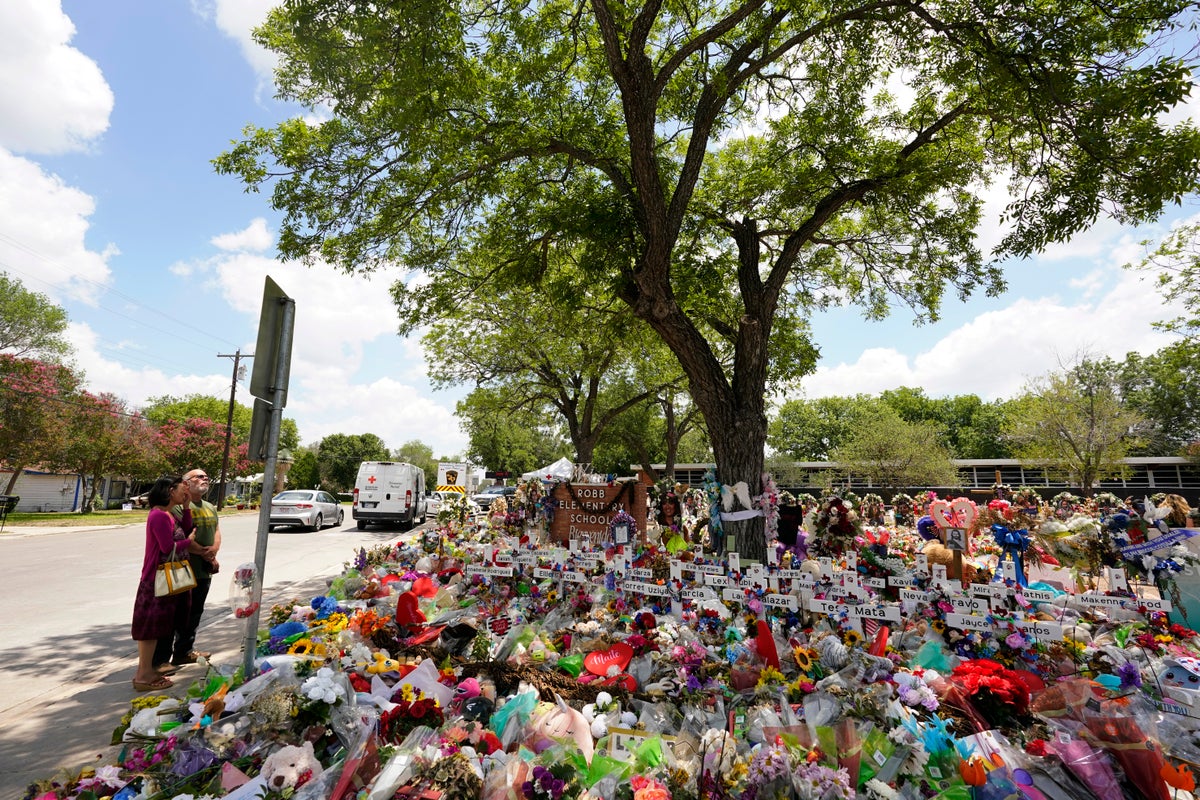
Police waited for protective equipment as they delayed entering the Texas elementary school where a gunman inside killed 19 children and two teachers, even as they became aware that some victims needed medical treatment, according to records obtained by The New York Times.
The details published Thursday by the Times provided a clearer picture of the slow law enforcement response as the massacre unfolded at Robb Elementary School in Uvalde, Texas. Police waited more than hour to confront the gunman, even as anguished parents outside the school urged officers to go inside.
Pete Arredondo, the Uvalde school district police chief, led the response on the scene of the May 24 shooting. A man who investigators believe to be Arredondo could be heard on body camera footage talking about how much time was passing.
“People are going to ask why we’re taking so long,” said the man, according to a transcript of officers’ body camera footage obtained by the newspaper. “We’re trying to preserve the rest of the life.”
Sixty officers had assembled on the scene by the time four officers made entry, according to the report. The two classrooms where the shooting took place included 33 children and three teachers.
Not all the victims were found dead when officers finally went inside: one teacher died in an ambulance and three children died at nearby hospitals, according to the records obtained by the Times, which included a review of law enforcement documents and video that have been gathered as part of the investigation.
The family of Xavier Lopez, 10, said the boy had been shot in the back and lost a lot of blood as he waited for medical attention.
“He could have been saved,” Leonard Sandoval, the boy's grandfather, told the newspaper. “The police did not go in for more than an hour. He bled out.”
Steven McCraw, the head of the Texas Department of Public Safety, has said Arredondo made the “wrong decision” to not order officers to breach the classroom more quickly to confront the 18-year-old gunman. On Thursday, McCraw was interviewed behind closed doors at the Texas Capitol by a legislative committee tasked with investigating the shooting.
Arredondo has not responded to repeated interview requests and questions from The Associated Press.
Law enforcement and state officials have struggled to present an accurate timeline and details, and made frequent corrections to previous statements. No information about the police response has been formally released since the days that followed the attack.
But the records obtained by the Times offered new details, including that the gunman, Salvador Ramos, had a “hellfire” trigger device meant to allow a semiautomatic AR-15-style rifle to be fired more like an automatic weapon, but did not appear to have used it during the attack. Ramos had spent more than $6,000 amassing an arsenal of weapons that included two AR-15-style rifles, accessories and hundreds of rounds of ammunition, according to the documents.
The Times reported that some of the officers who first arrived at the school had long guns, and that Arredondo learned the gunman’s identity while inside the school and attempted to communicate with him through the closed classroom doors.
Eva Mireles, one of the teachers who was killed, made a phone call to her husband, a Uvalde school district police officer, during the attack. The documents obtained by the Times show that Ruben Ruiz informed responders on the scene that his wife was still alive in one of the classrooms.
“She says she is shot,” Ruiz could be heard telling other officers as he arrived inside the school at 11:48 a.m., according to the body camera transcript.
By 12:46 p.m., Arredondo gave his approval for officers to enter the room.
“If y’all are ready to do it, you do it,” he said, according to the transcript.







